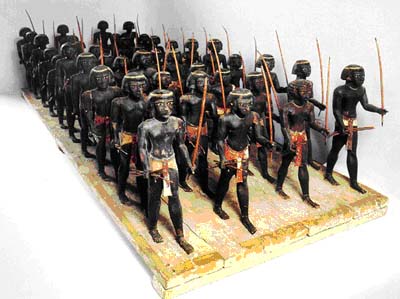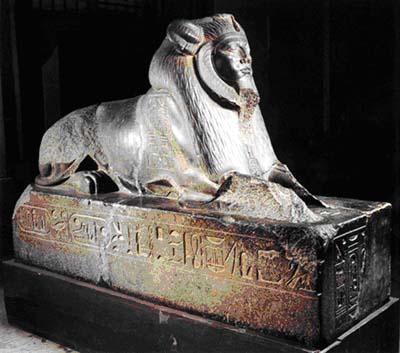|

|
Nubian Archers
|
In the Middle Kingdom period, small woodcarving works were popular as funerary objects buried with the dead, the most famous of which is a company of painted wooden mercenary soldiers found in the tomb of Mesehti, a prince from the region of Assiut (Middle Dynasty, about 2000 B.C.).
This group consists of 40 mercenary Nubian archers, 40-centimeters tall, in their full dress and armor of bows and arrows. The sculptor made use of the variations of facial expressions, and colorful costumes, contrasting with their dark bodies, to provide a realistic effect.
Nubia was famous throughout ancient history as a land of expert and feared archers. Governors of provinces used to recruit troops of soldiers there at times of disorder. Nubia was known to the Egyptians as "Ta Sety," the "Land of the Bow," because of the fame of these Nubian archers.
|

|
Sphinx of Amenemhat III
|
This statue is also known as the Great Sphinx of Tanis. The 220-centimeter Sphinx has been recognized as a statue of Amenemhat III. With lion's ears protruding on each side of a human face and a thick mane wrapping up its head, chest, and shoulders, the Sphinx of Amenemhat III has a unique style among other Sphinx statues. This uniqueness strengthens the dignity and might of Amenemhat III portrayed by the statue.
